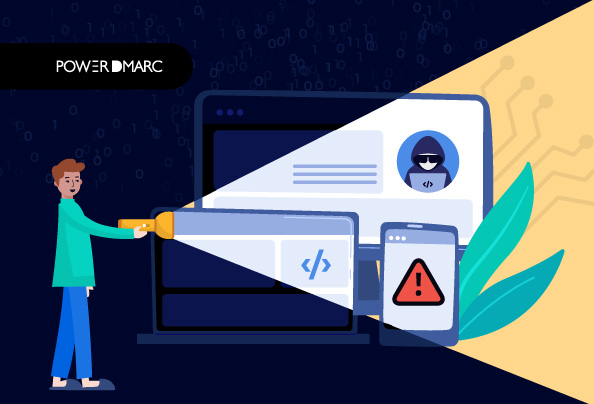Users of information systems in large organizations often have strong reactions to their experience with the system. The need to navigate an IT environment composed of a myriad of point solutions can be frustrating for end users. Consequently, many departments develop and rely on their own point solutions to overcome perceived limitations with a single organization-wide solution. This marked the origin of Shadow IT. A department that has shadow IT resources has more agility in its processes. Also, it avoids the alignment between departments, which is often impossible: which is the main benefit it revolves around. However, Shadow IT poses a colossal collection of security risks and challenges that completely nullifies its one benefit. These security risks can be resolved with DMARC.
Let’s learn more about what Shadow IT is and how DMARC helps combat Shadow IT security risks with enhanced visibility.
What is Shadow IT?
Big companies often have large central IT departments to monitor networks, provide support, and manage the services used by the organization. However, it has been observed that a trend of shadow IT has started in recent years as employees often bypass the central authority and purchase their own technology to fulfil work-related goals. In an increasingly mobile world, employees prefer to bring their own devices to work because they already have them, they’re familiar with them, or they aren’t as bogged down by an IT department that requires complicated setups. As cloud-based consumer applications gain traction, the adoption of shadow IT is increasing. RSA, the security division of EMC, reports that 35 percent of employees circumvent their company’s security policies to get their job done.
Although it has been estimated that such a considerable population of employees belonging to other departments would use non-compliant methods to do their jobs, companies must keep in mind that uncontrolled use of Shadow IT could lead to losses in productivity and security.
Shadow IT Risks and Challenges for Organizations
According to a recent survey conducted by the Cloud Computing Association, over 30% of business’s run cloud applications that IT doesn’t know about. Many businesses face data breaches and failures due to their use of cloud applications. These cloud applications are typically already in use by employees, but aren’t being monitored by the IT department.
You never know when a non-IT department in your company is using Shadow IT to bypass organizational security, and sending out emails using cloud-based applications and services that are not authorized sending sources for your organization, using your identity. This can pave the way to unfiltered malicious activities, spam, and exchange of fraudulent messages that can potentially harm your company’s reputation and credibility. Shadow IT, as it’s called, can be vulnerable to data breaches and system failures if not monitored properly. This is exactly where DMARC steps in to resolve the shadow IT risks in security by authenticating sending sources even if they are successful in bypassing integrated security gateways to reach your client’s email server.
How Does DMARC Protect Against Risks Imposed by Shadow IT
The principal problem induced by Shadow IT is the lack of visibility on different departmental activities and their communication with external sources like clients and partners via third-party email-exchange services, without the knowledge of the IT department. This increased and unauthorized usage of cloud-based applications for exchanging information and communication causes a major influx in email fraud, impersonation attacks and BEC. DMARC as the most recommended email authentication protocol in the industry helps organizations stay one step ahead of Shadow IT activities.
- DMARC Aggregate reports provide visibility on sending sources and the IP addresses behind them, showing the IT department the exact origin of all unauthorized sending sources
- With DMARC enforcement at your organization, emails originating from illegitimate sources are rejected by receiving MTAs before it lands into your client’s inbox
- DMARC forensic reports elaborate in great detail, any attempts at domain spoofing, impersonation, BEC and other fraudulent activities
- This helps put an end to Shadow IT practices by non-IT departments without approval from the IT department
- This also helps in gaining visibility on all emails being sent to and from your domain by different departments at all times, what they entail, and the status of their authentication
Sign up today with DMARC analyzer and start your email authentication journey to curtail Shadow IT activities at your organization and maintain complete transparency across all departments.
- Rise in Tax Scams and IRS Email Impersonation Attacks During Tax Season - May 2, 2024
- Email Safety 101 to Fight Crypto Scams - April 30, 2024
- How to Find the Best DMARC Solution Provider for Your Business? - April 25, 2024
